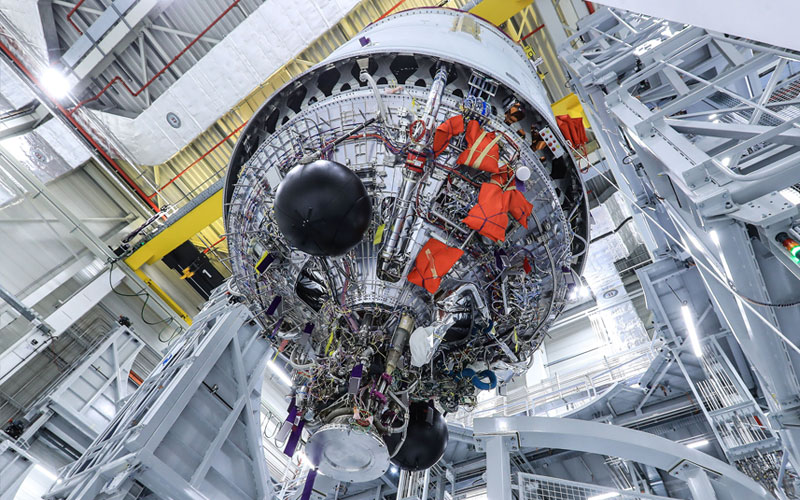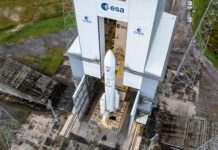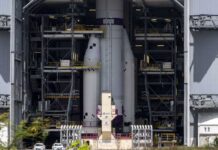
ArianeGroup announced on 15 April that it had successfully completed “the last hot firing test” of the Ariane 6 upper stage ahead of the rocket’s maiden flight.
In the ArianeGroup announcement, the company stated that the test, which occurred on 12 April, had demonstrated the operation of the upper stage under non-nominal conditions. It went on to explain that the test most notably put the stage’s Auxiliary Propulsion Unit (APU) through its paces. A total of three APU boosts were conducted with a total duration of 66 minutes. While not explicitly confirmed in the statement, an ArianeGroup spokesperson told European Spaceflight that the test had not included an ignition of the stage’s Vinci engine, stating that it was “not required.”
The APU is one of the key improvements Ariane 6 features over its predecessor. Ariane 5 used helium-filled metal spheres to pressurize the rocket’s upper stage for an engine restart. ArianeGroup introduced the APU to reduce weight and increase the stage’s versatility by enabling it to perform multiple restarts.
When in operation, the APU takes small quantities of liquid oxygen and hydrogen from the stage’s main tanks which it heats and pressurizes by means of a 3D-printed gas generator and injects back into tanks. This enables the stage to effectively maintain tank pressure for an engine restart.
The APU does, however, have broader applications over and above pressurizing the upper stage tanks. It can also generate additional thrust on demand that can be used to improve the accuracy of final orbital injection or even to deorbit the stage.
Why the mystery?
Following a commitment from ESA Director General Josef Aschbacher, ESA, ArianeGroup, and CNES began publishing regular updates regarding the progress of Ariane 6 testing and the road to its maiden flight. The first update was published in May 2023 and new updates have been published around once or twice a month since. The approximate date of both of the last two upper stage tests was revealed several months in advance across multiple updates, with specific dates provided a month or two leading up to the tests.
The 15 April upper stage test was not revealed in a single update. The last update, published on 22 March, outlined the second booster for the maiden flight being completed in early April and the verticalisation of the central core occurring sometime in April. No other milestone was scheduled to occur this month. Then there’s the nature of the test.
According to ArianeGroup, the 15 April test demonstrated the operation of the upper stage “under non-nominal conditions.” The aborted 7 December upper stage test also sought to examine how the stage behaves in “extreme and unexpected conditions.” While the results of an ArianeGroup-led investigation into what caused the early abort had been expected in mid-January 2024, neither the company nor ESA have publicly identified the root cause.
In an 18 December update, the Ariane 6 Launcher Task Force stated that the test was aborted when sensors “detected that some parameters had gone beyond predetermined thresholds.” The update did, however, stress that the stage would not operate in such a test configuration during its inaugural flight. The only other update regarding the 7 December test came in January with the task force explaining that “technical investigations are still ongoing.” The update did, however, reveal that based on the analysis performed thus far, the launch period for the maiden Ariane 6 flight would remain unchanged.
Testing the APU and not the Vinci engine is also an interesting element of the announcement. The APU may be the most well-tested component of the rocket’s upper stage propulsion system. In May 2021, ArianeGroup revealed that the APU had completed its qualification campaign, which included 137,601 seconds of operation over 53 tests. That’s 2,293.35 minutes or 38.2 hours. It was also tested during all the previous Ariane 6 upper stage hot fire tests.
While there does appear to be much about the 15 April test that hasn’t been shared with the public, a successful test is a positive step forward ahead of the maiden Ariane 6 flight. The launch is currently slated to occur between 15 June and 31 July.




